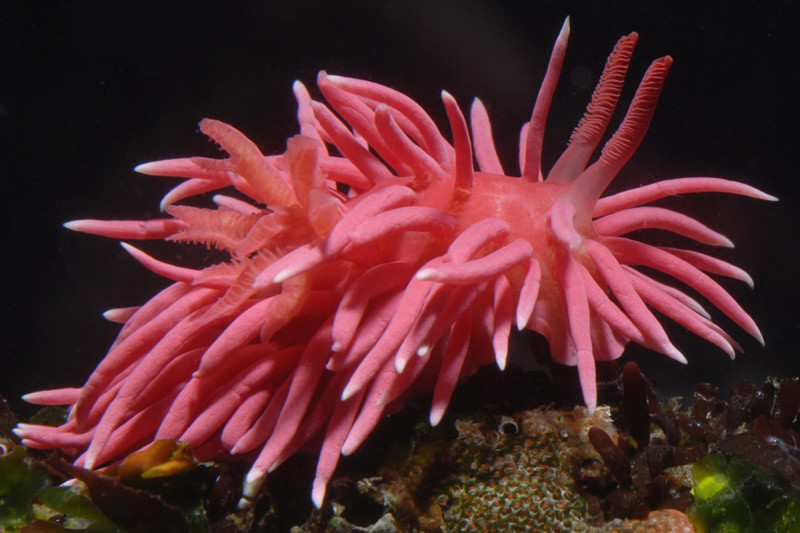Warm waters in the Pacific Ocean a causing dozens of species of nudibranch to more northwards past their traditional range. This could signal the beginning of a major climate shift in the region, says Jeffrey Goddard, a marine biologist at the University of California, Santa Barbara.
His team tracked the northernmost sightings of 30 species of nudibranch along the US coast during 2014, when a large portion of the eastern Pacific Ocean was unusually warm – a phenomenon that came to be known as “the blob”.

Nine of these species (Placida cremoniana, Trapania velox, Doriopsilla fulva, Janolus anulatus, J. barbarensis, Flabellina cooperi, Anteaeolidiella chromosoma, A. oliviae, and Noumeaella rubrofasciata) were recorded from new northernmost localities, while the remainder were found at or near northern range limits.
Most notably was the bright pink Okenia rosacea (Hokpins rose) nudibranch which usually lives south of San Francisco but was seen as far north as Oregon. The last observed Okenia rosacea in Oregon was a single specimen found during the 1997-98 El Niño, however in 2015 this pink nudibranch reached high densities and was observed spawning throughout northern California and into southern Oregon.

Nudibranchs are excellent indicators of shifts in ocean temperatures and currents, Goddard says. They have long-lived planktonic larvae that are easily transported by currents, but fast-growing and short-lived adults. So when you see adults in a new place, you know they arrived recently.
“It’s like they’re waving little semaphore flags, saying ‘hey, we just got here from southern California’,” he says.The next question is whether they will stay in their new homes, or retreat as waters cool and currents slow.
Goddard thinks that at least some will stick around, and even move further north during the strong El Niño, which drives powerful northward currents along the coast. “If the nudibranchs get into those currents they can go for a real ride,” he says – and he has already received “remarkable” reports from as far north as Vancouver Island. [New Scientist]









